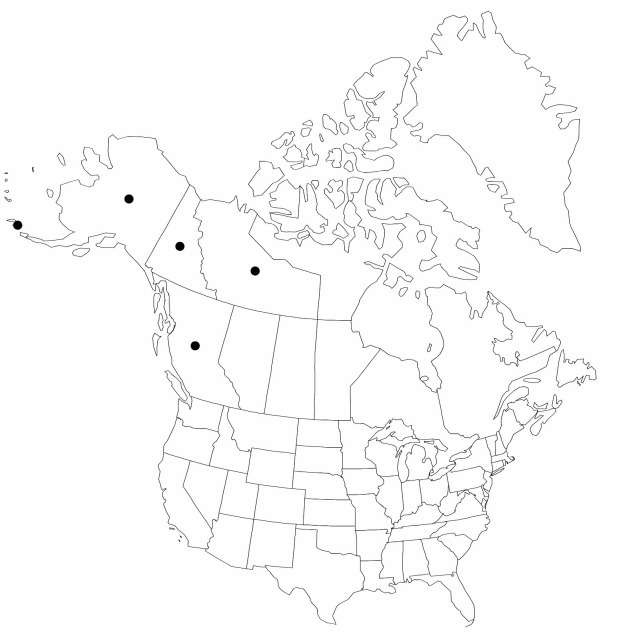Show Lower Taxa
Carex microchaeta
Amer. J. Sci. 167: 305. 1904.
Illustrated
Culms 5–35 cm. Leaves basal; proximal leaves with blades 5–6 mm wide. Inflorescences: spikes approximate, oblong to elongate, 8–25 × 3–8 mm; proximal spike separate, sometimes pendent and long-pedunculate; lateral spikes 2–4; distal spikes erect, short-pedunculate. Pistillate scales dark brown to black, ovate or lanceolate, equaling and as wide as perigynia, apex acute or mucronate. Perigynia veinless, ovate, 3-5–4 × 1.5–2 mm, papillose; beak 0.3–0.5 mm, shallowly bidentate or truncate, sparsely papillose or smooth.
Distribution

B.C., N.W.T., Yukon, Alaska, Asia (Russian Far East).
Discussion
Subspecies 2 (2 in the flora).
Selected References
None.
Key
| 1 | Perigynia, including beak, reddish brown or purple; midvein of pistillate scales dark, same color as body, inconspicuous. | Carex microchaeta subsp. microchaeta |
| 1 | Perigynia greenish yellow or yellow-brown, beak black; midvein of pistillate scales lighter color than body, conspicuous. | Carex microchaeta subsp. nesophila |